Abstract
We investigated nutrient limitations during hydrocarbon degradation in a sandy soil and found that fixed nitrogen was initially a limiting nutrient but that N limitation could sometimes be overcome by N2 fixation. Hydrocarbon biodegradation was examined in an unsaturated sandy soil incubated aerobically at 20 degrees C with propane or butane and various added nutrients. Propane and butane degradation proceeded similarly during the first 3 months of incubation. That is, bacteria in soil amended with N oxidized these hydrocarbons more rapidly than in controls without nutrient additions or in soil with added phosphate or trace minerals. Both propane- and butane-amended soil apparently became N limited after the initial available inorganic N was utilized, as indicated by a decrease in the rates of hydrocarbon degradation. After 3 months, propane and butane degradation proceeded differently. Bacteria in propane-degrading soil apparently remained N limited because propane degradation rates stayed low unless more N was added. In contrast, bacteria in butane-degrading soil appeared to overcome their N limitation because butane degradation rates later increased regardless of whether more N was added. Analyses of total N and acetylene reduction assays supported this apparent surplus of N in butane-amended soil. Total N was significantly (P < 0.01) higher in soil incubated with butane and no N amendments than in soil incubated with propane, even when the latter was amended with N. Acetylene reduction occurred only in butane-amended soil. These results indicate that N2 fixation occurred in butane-amended soil but not in propane-amended soil.
Full text
PDF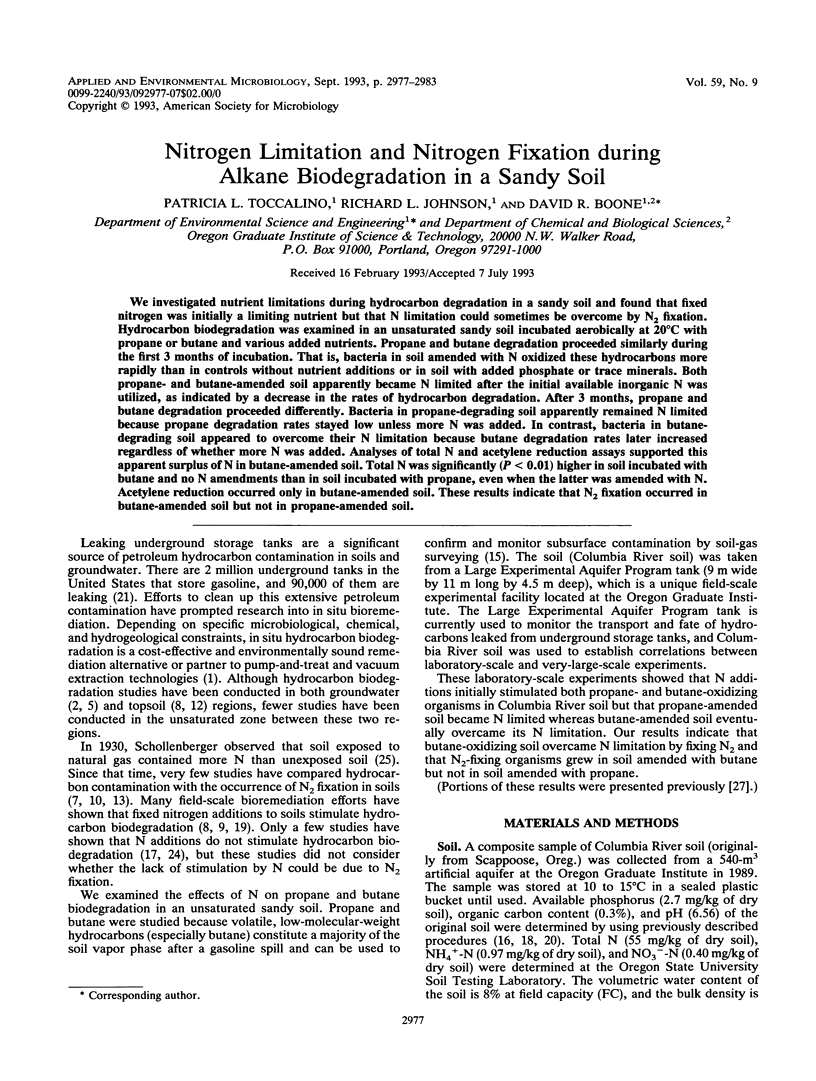
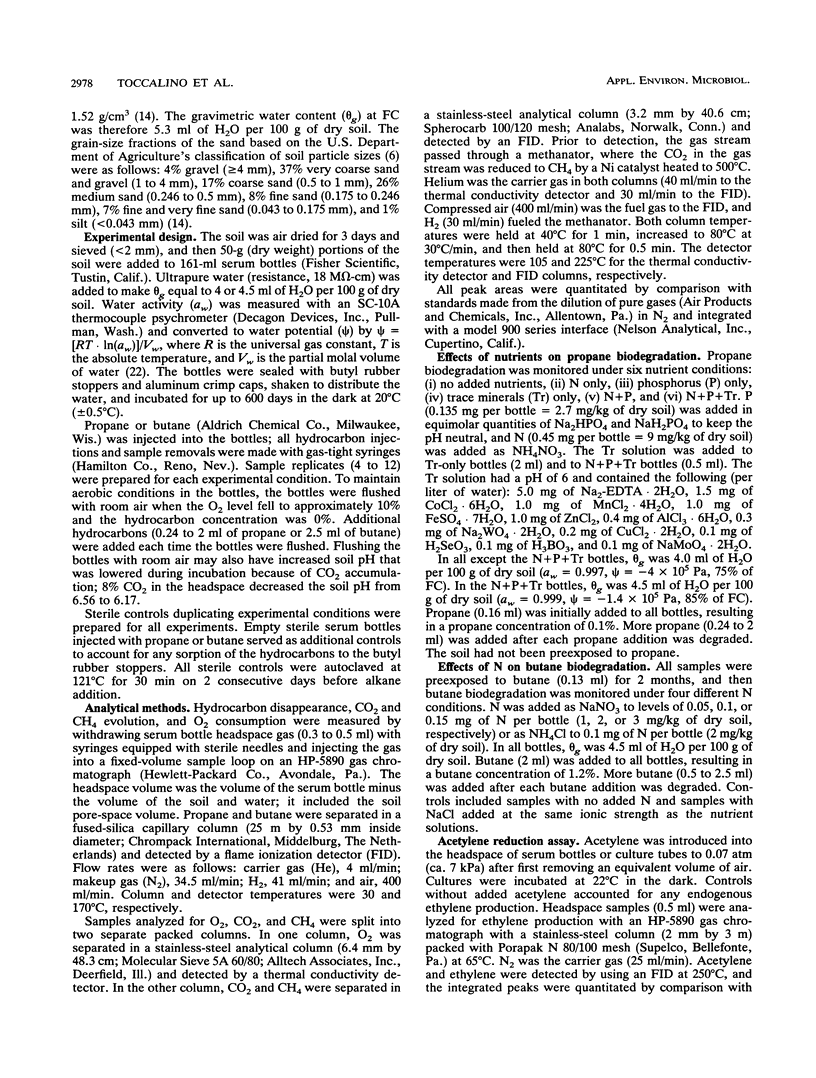
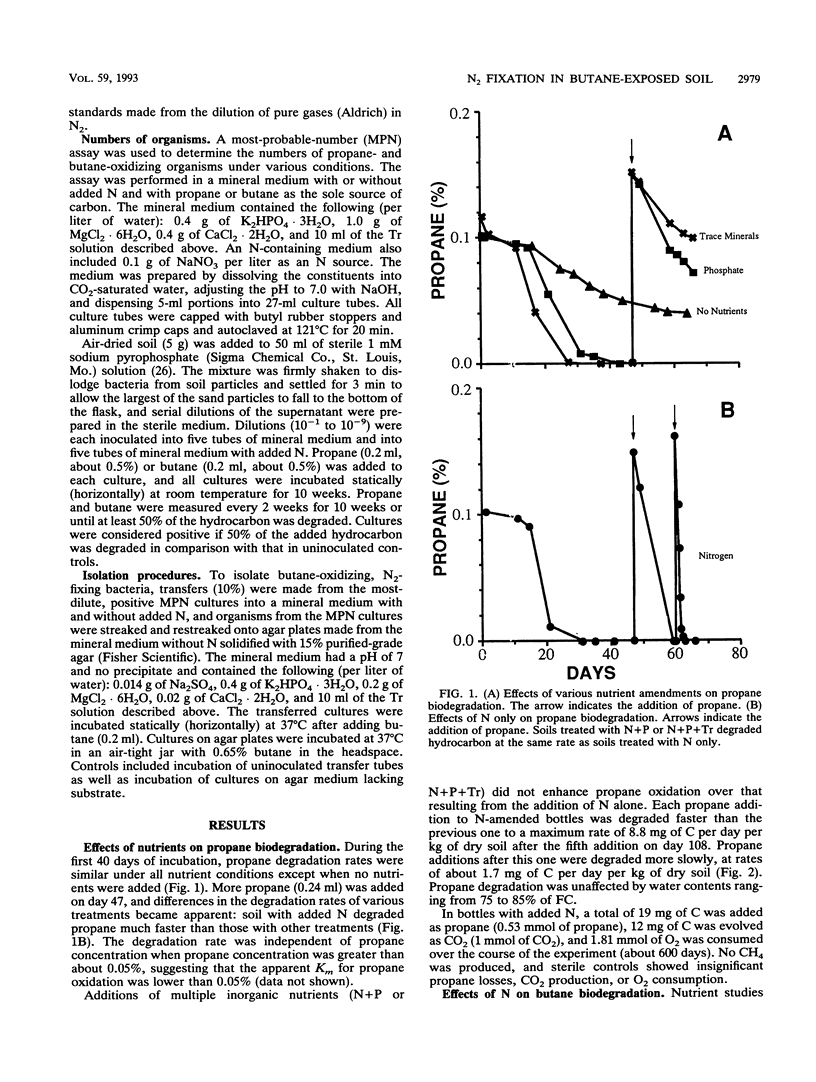
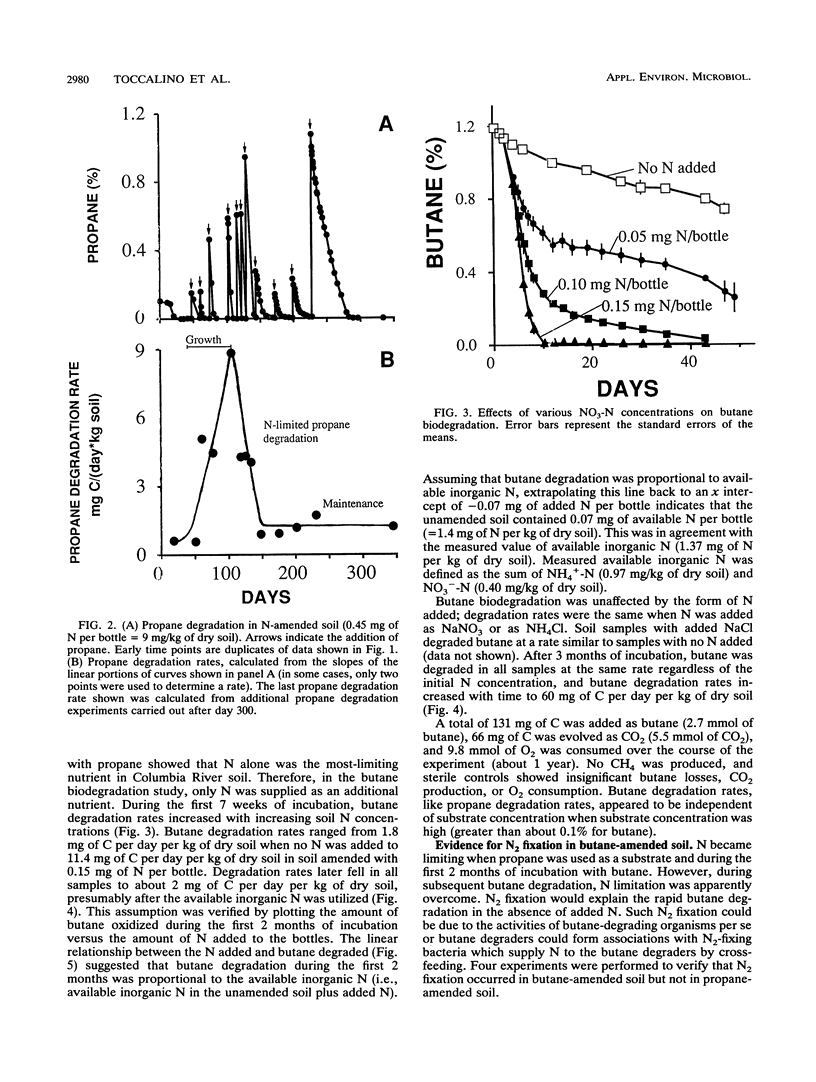
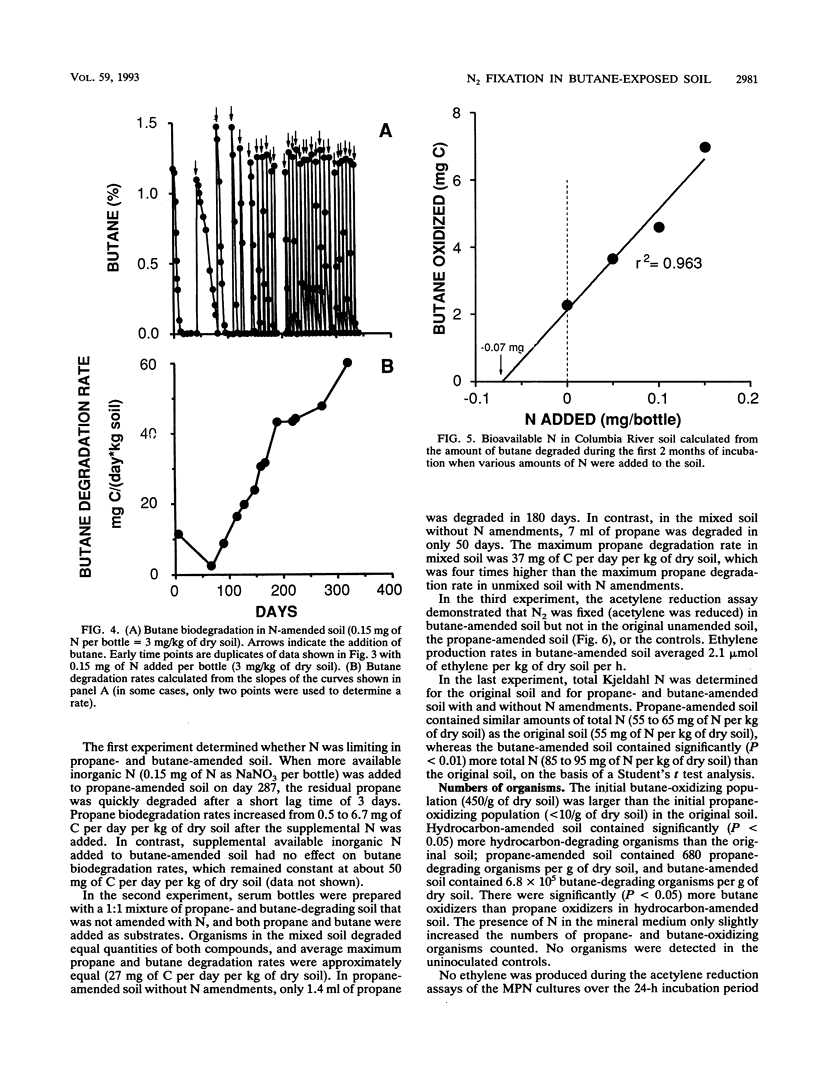
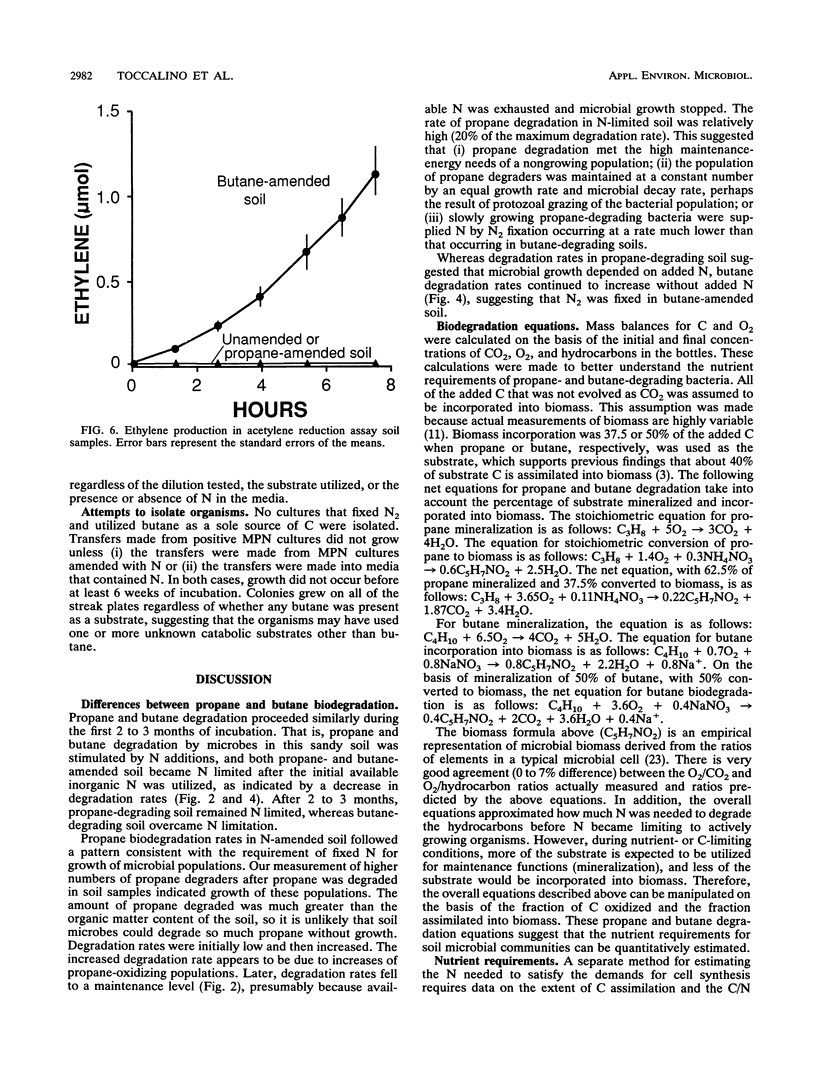
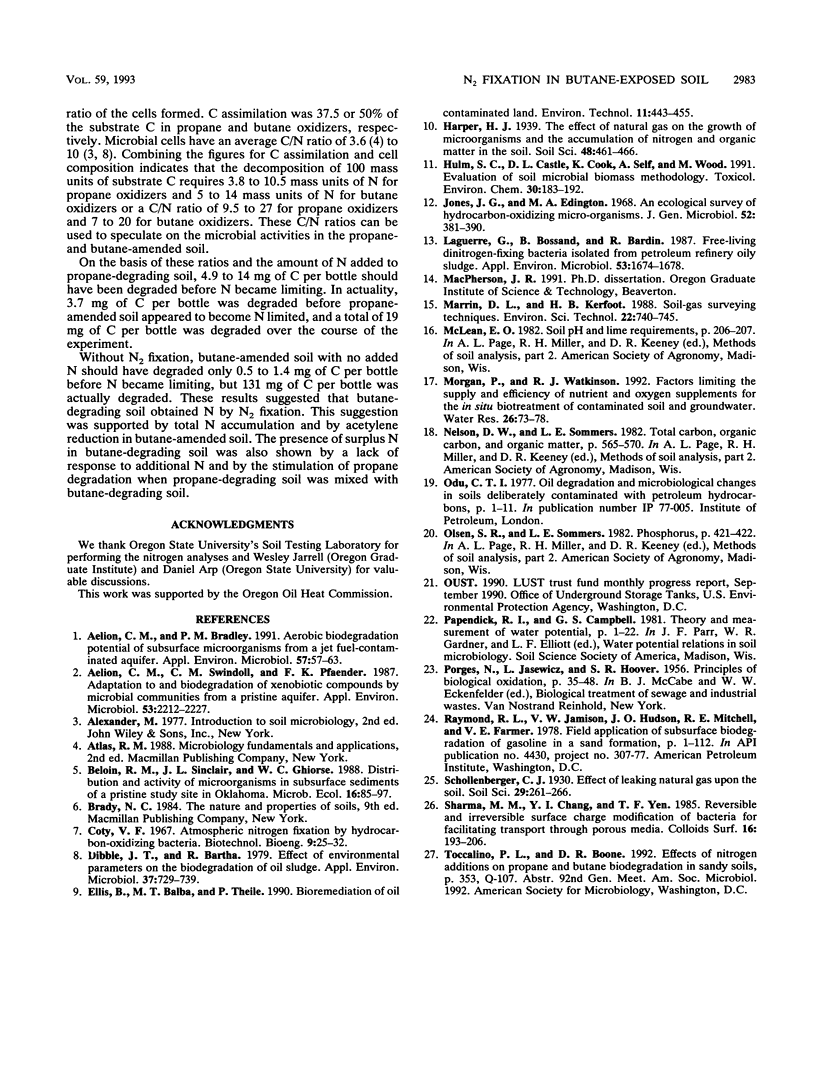
Selected References
These references are in PubMed. This may not be the complete list of references from this article.
- Aelion C. M., Bradley P. M. Aerobic biodegradation potential of subsurface microorganisms from a jet fuel-contaminated aquifer. Appl Environ Microbiol. 1991 Jan;57(1):57–63. doi: 10.1128/aem.57.1.57-63.1991. [DOI] [PMC free article] [PubMed] [Google Scholar]
- Aelion C. M., Swindoll C. M., Pfaender F. K. Adaptation to and biodegradation of xenobiotic compounds by microbial communities from a pristine aquifer. Appl Environ Microbiol. 1987 Sep;53(9):2212–2217. doi: 10.1128/aem.53.9.2212-2217.1987. [DOI] [PMC free article] [PubMed] [Google Scholar]
- Dibble J. T., Bartha R. Effect of environmental parameters on the biodegradation of oil sludge. Appl Environ Microbiol. 1979 Apr;37(4):729–739. doi: 10.1128/aem.37.4.729-739.1979. [DOI] [PMC free article] [PubMed] [Google Scholar]
- Laguerre G., Bossand B., Bardin R. Free-living dinitrogen-fixing bacteria isolated from petroleum refinery oily sludge. Appl Environ Microbiol. 1987 Jul;53(7):1674–1678. doi: 10.1128/aem.53.7.1674-1678.1987. [DOI] [PMC free article] [PubMed] [Google Scholar]


